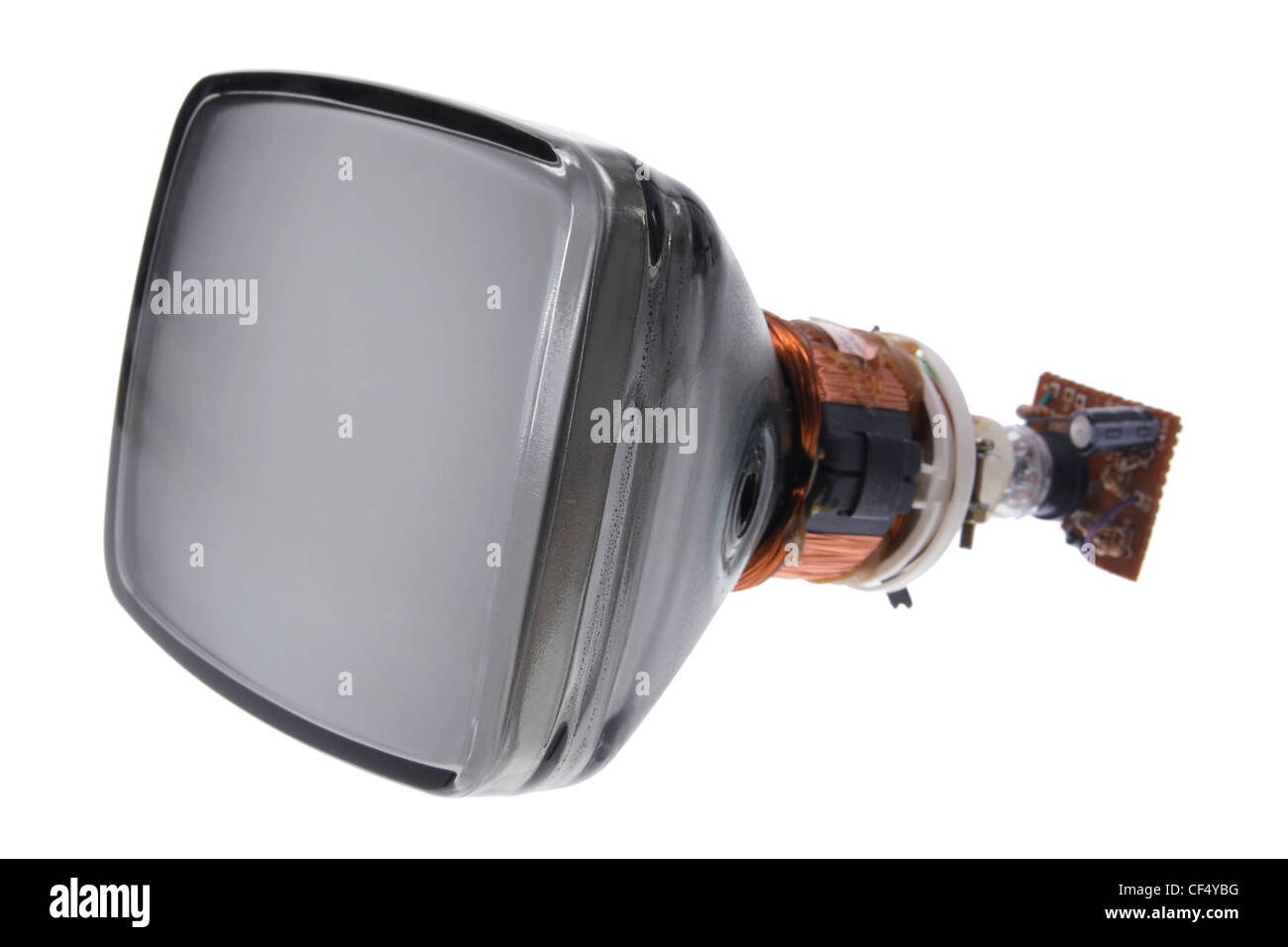

Computer Monitorsīefore LCD and LED panels gained over, CRT monitors were the preferred option for computer users. The ability to generate brilliant colors and deep blacks made CRT TVs a popular option for families throughout the globe. CRT TVs offer viewers a stable and vivid viewing experience. Televisionįor many decades, This technology was associated with television displays. Each piece plays a significant part in creating and presenting pictures on the net. ComponentsĪ typical CRT comprises numerous main components, including an electron gun, focusing and deflection devices, a phosphor-coated screen, and a vacuum enclosure.
#Cathode ray tube television radiation full
Notable developments include the creation of the oscilloscope, the advent of color CRT displays, and the downsizing of CRTs for use in TVs and CRT full form in computer monitors.

Throughout the 20th century, fundamental advances were reached in CRT technology. The foundation for the development of the CRT as we know it today was laid by these findings. It is possible to trace the origins of CRT technology to the late 19th century when researchers like Ferdinand Braun and Karl Ferdinand Braun made significant advancements in the study of electron beams and cathode rays. Over time, CRT screens developed increasingly small and lightweight, making them useful for a number of applications. However, technological developments led to the introduction of color CRTs, which increased picture quality and color accuracy. Early screens were monochromatic and had limited resolution. This technology has seen substantial progress since its introduction. By changing the strength and location of the electron beam, the Cathode ray tube provides a visual display. The electron beam is produced from a heated cathode and propelled towards the screen using a succession of electromagnetic fields. Working PrincipleĪt its heart, a CRT is a vacuum tube that employs an electron beam to create pictures on a fluorescent screen. CRTs provided the framework for creating visual content and played a significant part in altering how we consume information and entertainment. Before the emergence of contemporary flat-panel technology, displays dominated the market and were extensively used in TVs, computer CRT, and oscilloscopes. The Cathode Ray Tube technology is relevant in displays and visual communication history.

This blog will study the intriguing world of CRT technology, its historical relevance, working principle, uses, benefits, limits, safety issues, and legacy in the digital era. CRT full form is Cathode Ray Tube, a technology that had a vital part in moulding our viewing experience for many decades.


 0 kommentar(er)
0 kommentar(er)
